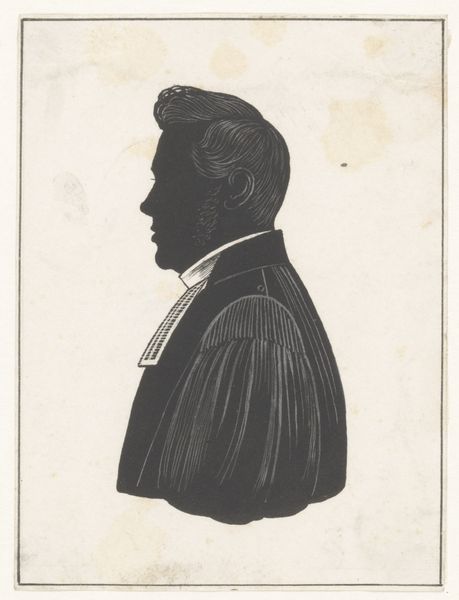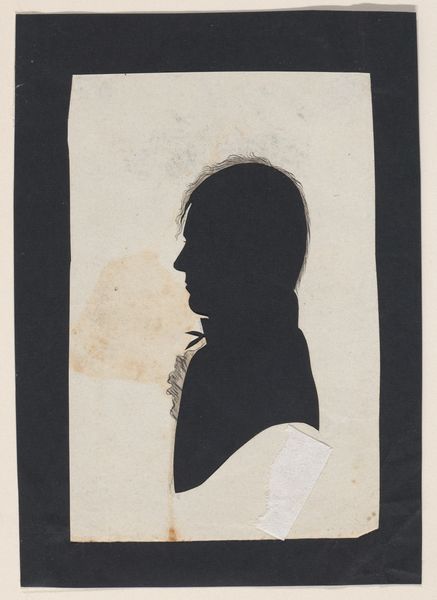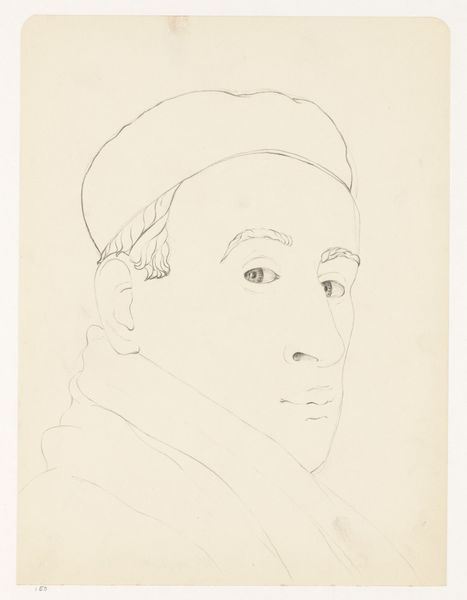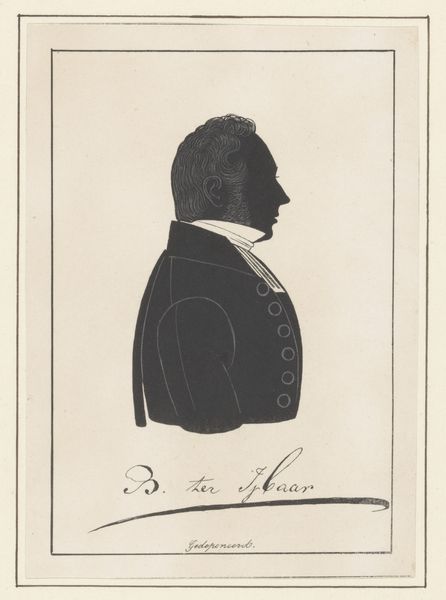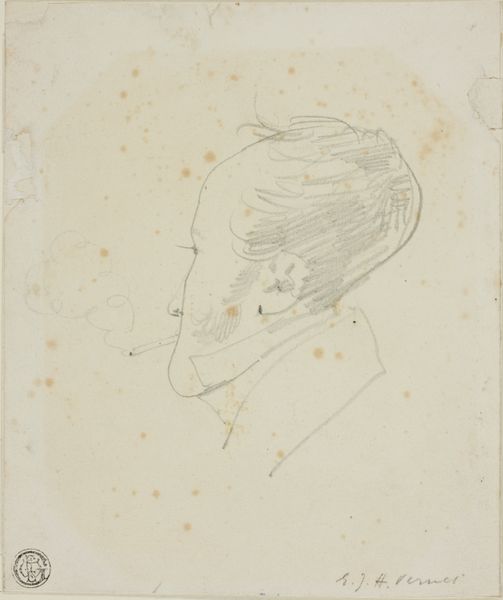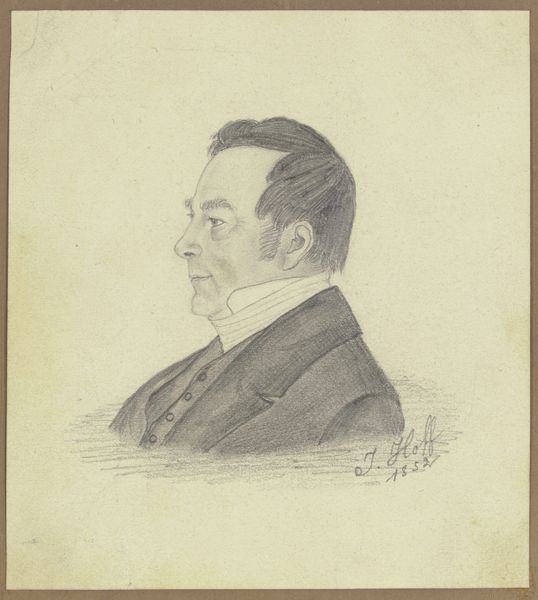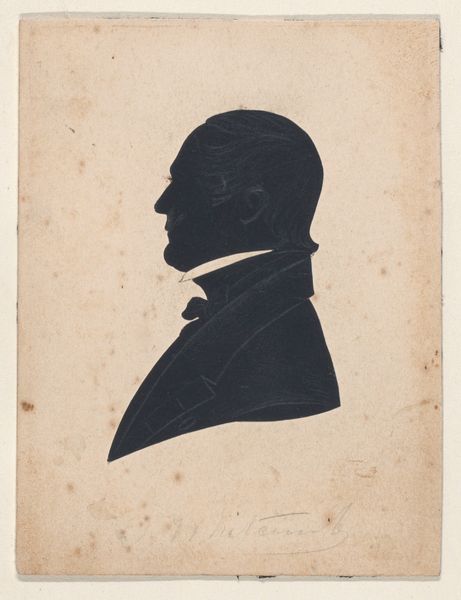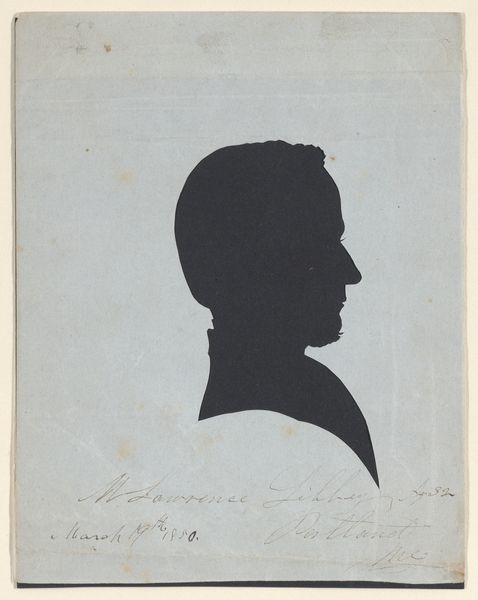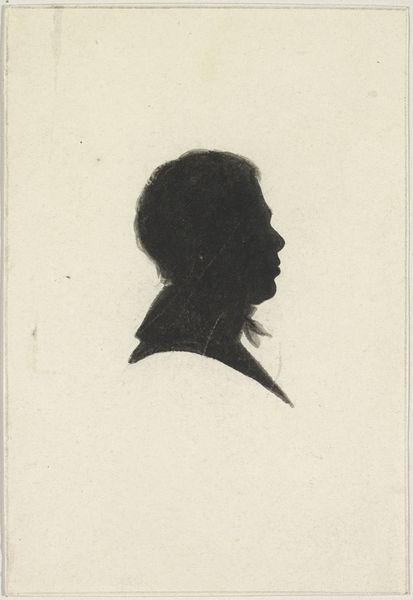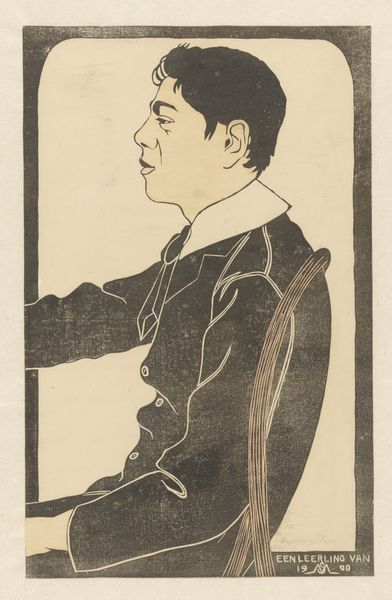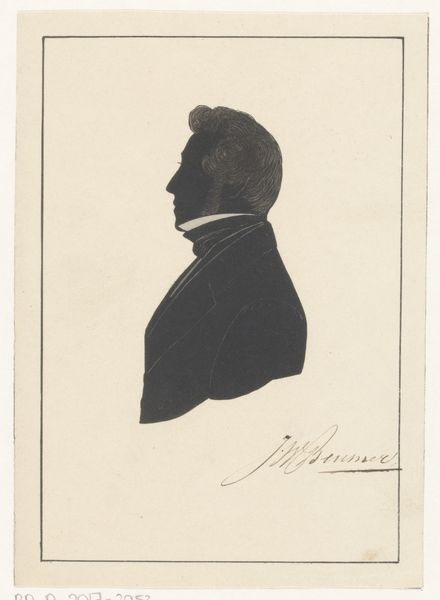
drawing, coloured-pencil, pencil
#
portrait
#
drawing
#
coloured-pencil
#
caricature
#
figuration
#
romanticism
#
pencil
#
portrait drawing
Dimensions: overall: 62.9 x 47.6 cm (24 3/4 x 18 3/4 in.)
Copyright: National Gallery of Art: CC0 1.0
Curator: Let's consider this likeness of "Mr. William Waters," a colored-pencil drawing created circa 1825 to 1830 by Ruth Henshaw Bascom. What's your immediate impression? Editor: He strikes me as self-contained, almost stoic. There's a formality in the sharp collar and dark coat, contrasted with what appears like soft pencil strokes. How does Bascom's approach to materials influence your perception? Curator: Immensely. Bascom worked as an itinerant portrait artist. She innovated within those constraints. Using pastel crayons or colored pencils, materials easily transported and relatively inexpensive, she produced likenesses for middle-class families that might not have been able to afford an oil painting. This accessibility reframes who gets memorialized, shifting art's function. Editor: Absolutely, there's a powerful democratization inherent in that choice. Considering the historical context, such portraiture allowed emerging communities to visualize themselves and assert their identity. The subject's expression – or perhaps, its perceived restraint – speaks volumes about gendered expectations and self-presentation norms during that period. How would the viewer interpret this presentation of masculinity? Curator: The stark profile and rather planar depiction emphasizes his social standing. He’s not engaged; he is being observed, his likeness captured and disseminated. The color palette feels practical, and speaks to a functional elegance of portraying status. There's a delicate balance of the Romantic period aesthetic, but it remains clearly accessible in a very tangible manner. Editor: I find myself thinking about the labor of both the artist and the sitter. While we see the finished product, what were the social and economic exchanges occurring between artist and sitter, and how were ideas of social class reinforced or challenged through these artistic practices? How did that influence the circulation of such imagery, and to what degree did that imagery reach people excluded from it? Curator: Bascom, as a working artist, had limited time, likely traveling from home to home. This undoubtedly influenced the simplicity of the style and the quick application of the colors, underscoring her labor within the economic realities of her time. Editor: It is intriguing how her use of the materials shapes the portrait’s identity and reveals an interplay of personal expression and a historical visual language. It invites contemplation of access, class, and the dynamics within early American society. Curator: I agree; this portrait is more than a face. It is the convergence of artist, material, and subject within very defined socio-economic parameters.
Comments
No comments
Be the first to comment and join the conversation on the ultimate creative platform.
